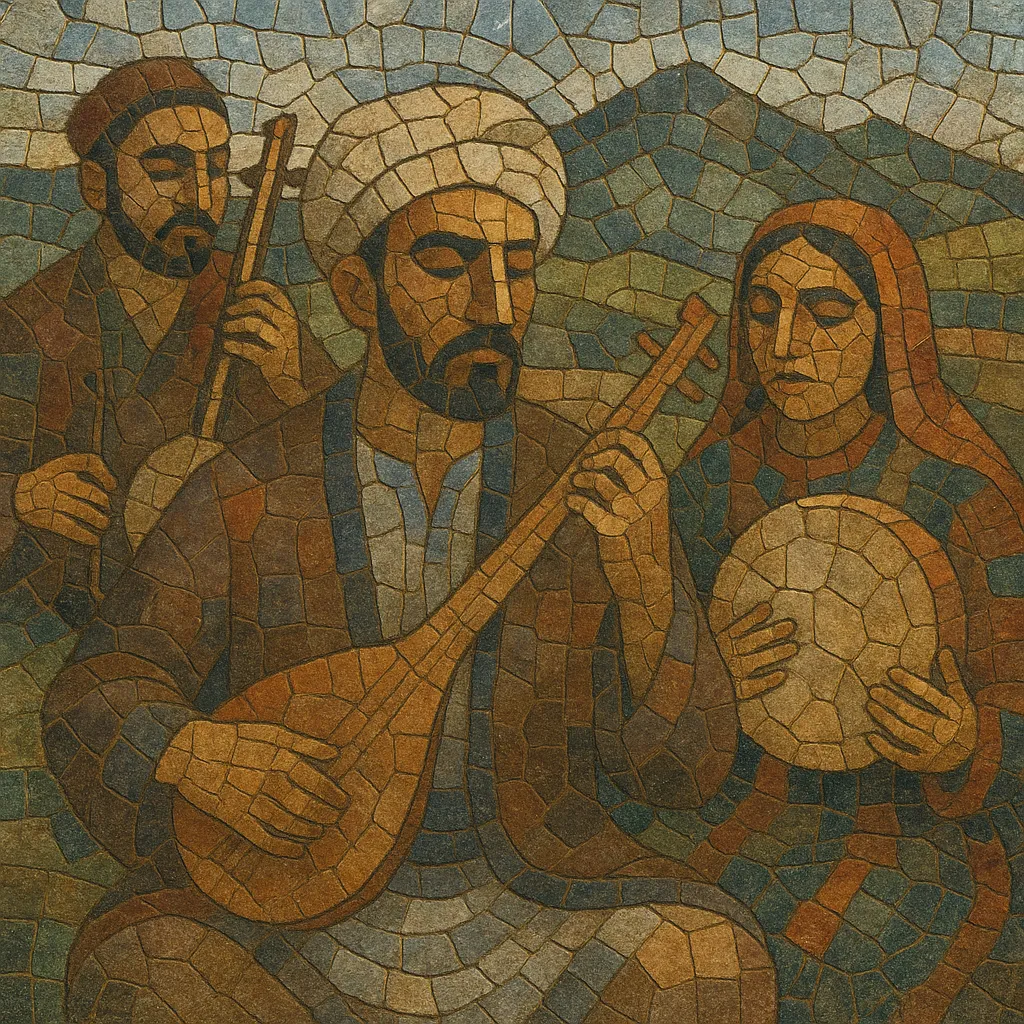
Hazara folk music is the traditional music of the Hazara people from the central highlands of Afghanistan (Hazarajat), performed primarily in the Hazaragi dialect of Dari.
It is best known for the dambura—a fretless, two‑string long‑necked lute whose brisk strumming patterns and resonant drone underpin both narrative ballads and lively dance songs. Supporting instruments can include the ghichak (spike fiddle), dayereh/daff (frame drum), zerbaghali (goblet drum), handclaps, and, in modern settings, rubab or harmonium.
Melodies are typically modal, ornamented with slides and grace notes, and can be pentatonic or heptatonic depending on the song type. Rhythms range from energetic 6/8 grooves for communal dancing to freer, rubato laments that convey longing and memory. Lyrical themes celebrate love, seasonal cycles, pastoral life, migration, historical memory, and communal resilience, often delivered in a direct, story‑telling style.
The roots of Hazara folk music trace back to the 1300s, when the Hazara community—of mixed Mongol, Turkic, and local Iranian heritage—consolidated in the central highlands of present‑day Afghanistan. Over centuries, local Khorasani/Persian musical practices and Central Asian lute traditions shaped a distinct style centered on the dambura, whose portability and strong rhythmic drive fit village life and oral storytelling.
The late 19th century saw severe displacement and persecution that imprinted themes of loss, endurance, and migration into the repertoire. Through the 20th century, performance contexts remained social—weddings, seasonal festivities, and communal gatherings—while radio and cassettes slowly broadened reach. Master singers and dambura players codified song types (dance songs, narrative epics, and laments), preserving them across generations.
Civil war and the Taliban’s cultural restrictions in the 1990s curtailed public performance, pushing preservation into the Hazara diaspora in Pakistan and Iran. After 2001, a cultural reopening led to renewed festivals (including the Dambura Festival in Bamyan), new recordings, and collaborations with Afghan pop and global folk scenes. Iconic figures such as the Sarkhosh brothers helped canonize the style while younger artists modernized production and stagecraft.
In the 2010s, social media and streaming amplified Hazaragi songs beyond regional borders, while women’s participation in public performance gained visibility. Since 2021, restrictions inside Afghanistan have again pressured public music‑making, but the repertoire continues to thrive through diaspora communities and digital channels, sustaining a living archive of Hazara identity and memory.

